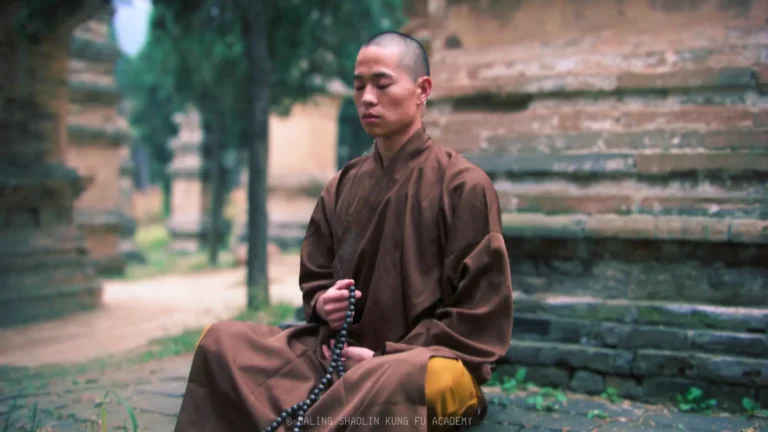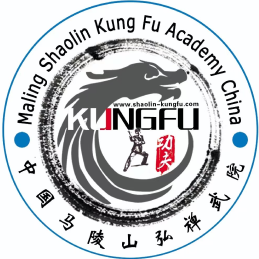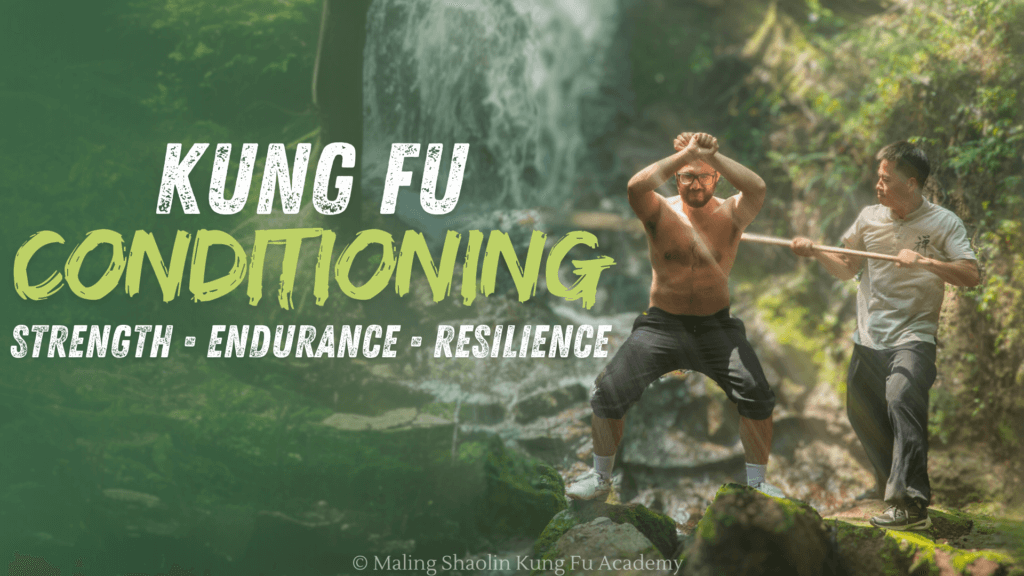
Introduction
Conditioning is a fundamental aspect of Kung Fu training, designed to develop strength, endurance, flexibility, and resilience. Unlike conventional fitness training, Kung Fu conditioning is deeply integrated into martial practice, preparing the body not only for powerful strikes but also for the rigors of long training sessions and real-world applications. From iron body techniques to deep stance training, this article explores the various methods of conditioning in Kung Fu and how they contribute to a martial artist’s overall development.
Definition of Conditioning in Kung Fu
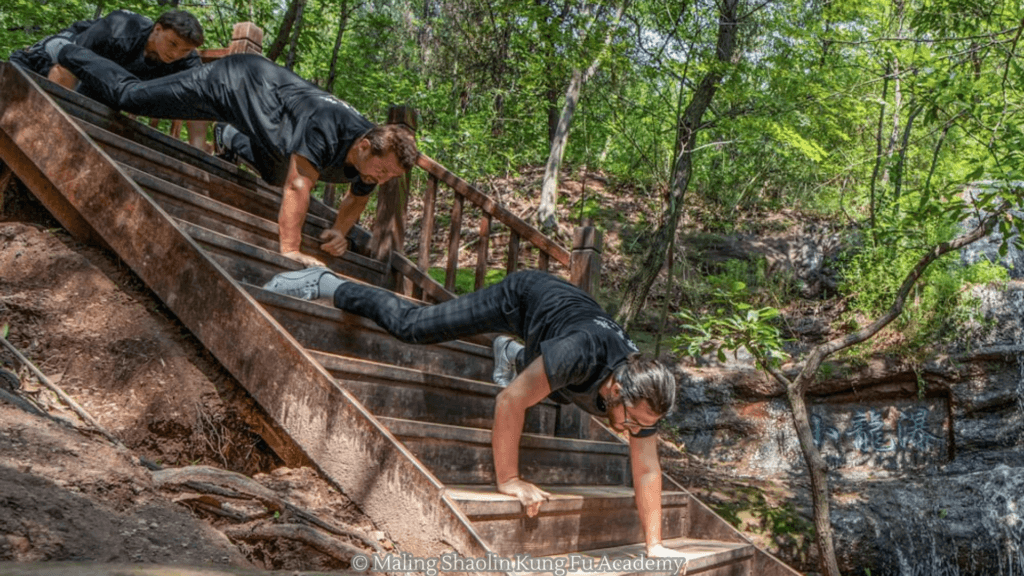
In the context of Kung Fu, conditioning refers to the systematic training of the body and mind to endure physical and mental stress while improving strength, endurance, flexibility, and resilience. It encompasses a broad range of practices, from hardening bones and muscles to refining breathing techniques and enhancing mental toughness.
While many associate conditioning primarily with external hardening—such as bone, skin, and muscle conditioning through repeated impact—true conditioning in Kung Fu goes far beyond physical endurance. It also includes internal aspects, like breath control, Qi cultivation, and mental fortitude, which allow practitioners to sustain high-intensity training, resist fatigue, and maintain focus even under extreme conditions.
The Role of Conditioning in Kung Fu
Most people, when they hear about Kung Fu conditioning, immediately think of iron body training, where martial artists repeatedly strike their limbs against hard objects or endure blows to toughen their bones, muscles, and skin. This type of training strengthens the body’s resistance to pain and injury, allowing practitioners to fight or train without easily bruising, breaking, or suffering internal damage.
However, conditioning is not just about getting hit or hitting hard surfaces. It includes a combination of:
- Strength training to build explosive power
- Impact resistance training to toughen the body against strikes
- Flexibility training to ensure mobility and prevent injuries
- Endurance training to sustain movement over long periods
- Breathwork and mental conditioning to enhance focus, resilience, and pain tolerance
True Kung Fu conditioning balances hard and soft, internal and external, and physical and mental training. This holistic approach ensures that a practitioner is not only strong on the outside but also resilient and composed on the inside, making them a well-rounded martial artist.
Strength Conditioning in Kung Fu
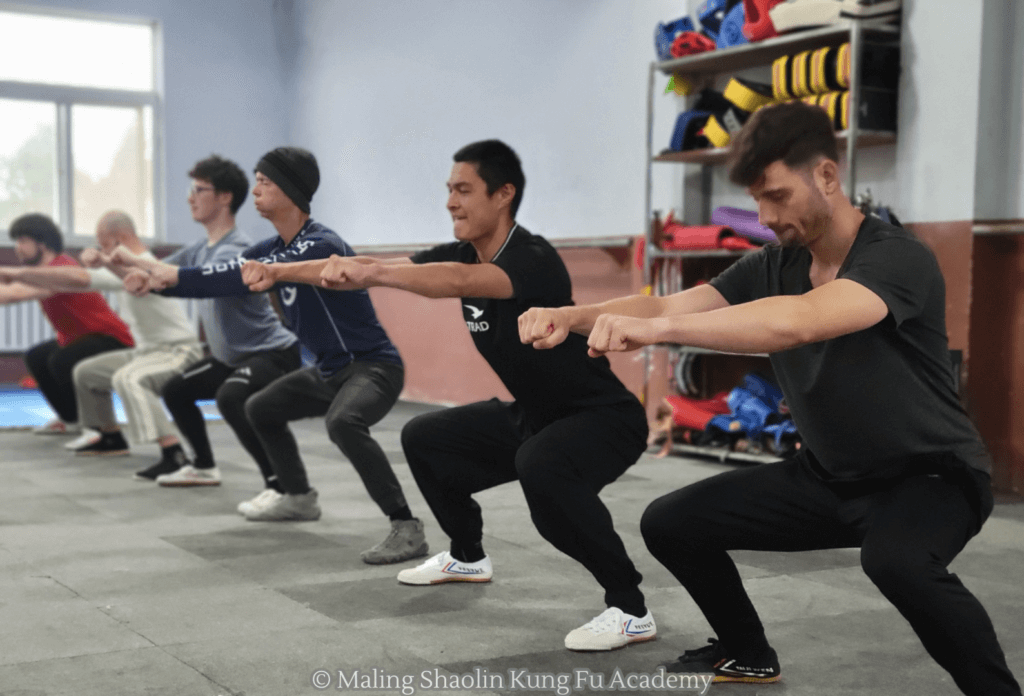
Kung Fu incorporates bodyweight exercises and traditional tools to develop full-body strength:
Bodyweight Training
Shaolin monks have long emphasized bodyweight conditioning to develop practical strength. Some key exercises include:
- Ma Bu (Horse Stance) – Strengthens the legs and core through prolonged holding.
- Push-ups and Variations – Targets the upper body, triceps, and core.
- Squats and Jumps – Builds explosive power for kicks and leaps.
- Bridging Exercises – Strengthens the neck, spine, and back for resilience in combat.
Equipment-Based Training
- Stone Locks (Shi Suo) – Traditional weights for grip and full-body strength.
- Iron Rings – Worn on the forearms to increase endurance and develop stronger strikes.
- Heavy Weapons Training – Builds shoulder and arm endurance while reinforcing proper technique.
Bone and Impact Conditioning
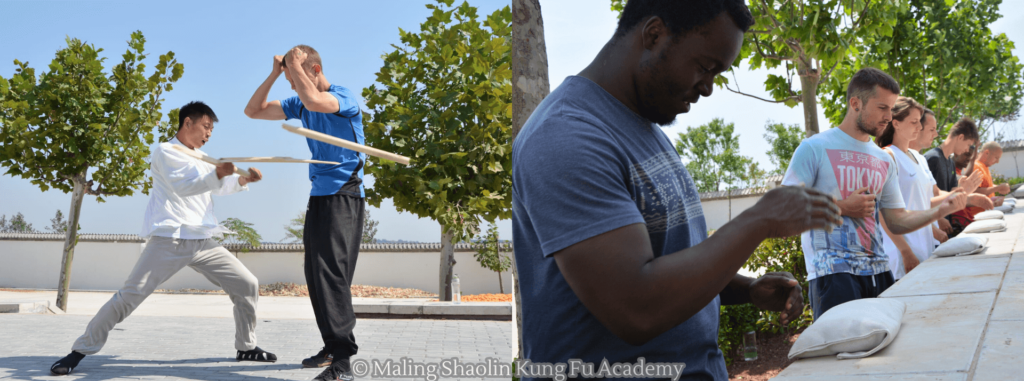
One of the most well-known aspects of Kung Fu training is the development of hardened limbs capable of withstanding powerful strikes.
Iron Body Training
Iron Body training strengthens the bones and skin to absorb impact without injury:
- Iron Palm – Repeated strikes on sandbags or wooden surfaces condition the hands for powerful, hardened strikes.
- Iron Shin and Forearm Training – Striking wooden posts, sandbags, or using rolling sticks to desensitize nerves and strengthen bone density.
- Golden Bell Training – A full-body conditioning practice focused on absorbing strikes and reinforcing the body’s structural integrity.
Progressive Impact Training
The key to effective bone conditioning is gradual adaptation. Training should start with light impact and progressively increase in intensity to avoid long-term damage.
Flexibility and Mobility Conditioning

Kung Fu requires high levels of flexibility, particularly in kicks, stances, and acrobatic movements.
Dynamic Stretching
Performed before training, dynamic stretches prepare the body for explosive movements:
- Leg Swings – Helps develop hip mobility for high kicks.
- Torso Twists – Improves core flexibility and rotational movement.
- Arm Circles – Prepares the shoulders for striking techniques.
Static Stretching
After training, static stretching helps increase flexibility and prevent stiffness:
- Butterfly Stretch – Opens the hips for deep stances.
- Front and Side Splits – Improves kicking range.
- Bridge Stretch – Enhances back flexibility and spinal mobility.
Endurance and Stamina Training

Kung Fu practitioners must build cardiovascular endurance and muscular stamina to sustain long training sessions.
Cardiovascular Conditioning
- Jump Rope Training – Enhances coordination and endurance.
- Hill Running – Develops leg strength and stamina.
- Shadowboxing Rounds – Improves breathing control and fight endurance.
High-Intensity Drills
- Stance Holding – Prolonged holding of deep stances builds leg endurance.
- Pad Work and Bag Training – Engages muscles repetitively for stamina development.
- Circuit Training – Combines multiple exercises to improve overall endurance.
Pain Tolerance and Mental Resilience

Traditional Kung Fu training pushes practitioners beyond their limits, forging a mindset capable of enduring hardship.
Cold Water Training
Practicing in cold environments or under waterfalls teaches breath control, resilience, and mental discipline. Additionally, training in extreme conditions is a common practice within Chinese martial arts, embodying the martial philosophy: greatness is born from perseverance through adversity.
Breath Control and Meditation
- Qi Gong (Energy Cultivation) – Strengthens the body’s ability to handle stress and fatigue.
- Focus Training – Concentrates the mind to withstand discomfort and pain.
Conclusion
Conditioning in Kung Fu is a holistic process, encompassing strength, endurance, flexibility, impact resistance, and mental fortitude. These practices are not only essential for combat effectiveness but also for overall physical health and longevity. By incorporating these methods into regular training, practitioners develop a well-rounded martial arts foundation that extends beyond techniques into a way of life.
Whether you’re a beginner or a seasoned martial artist, conditioning remains a critical aspect of your journey. Embrace the discipline, push your limits, and cultivate the body and mind required to truly excel in Kung Fu.


